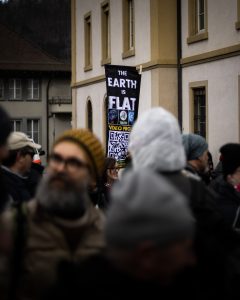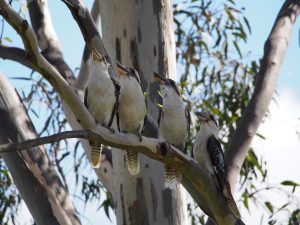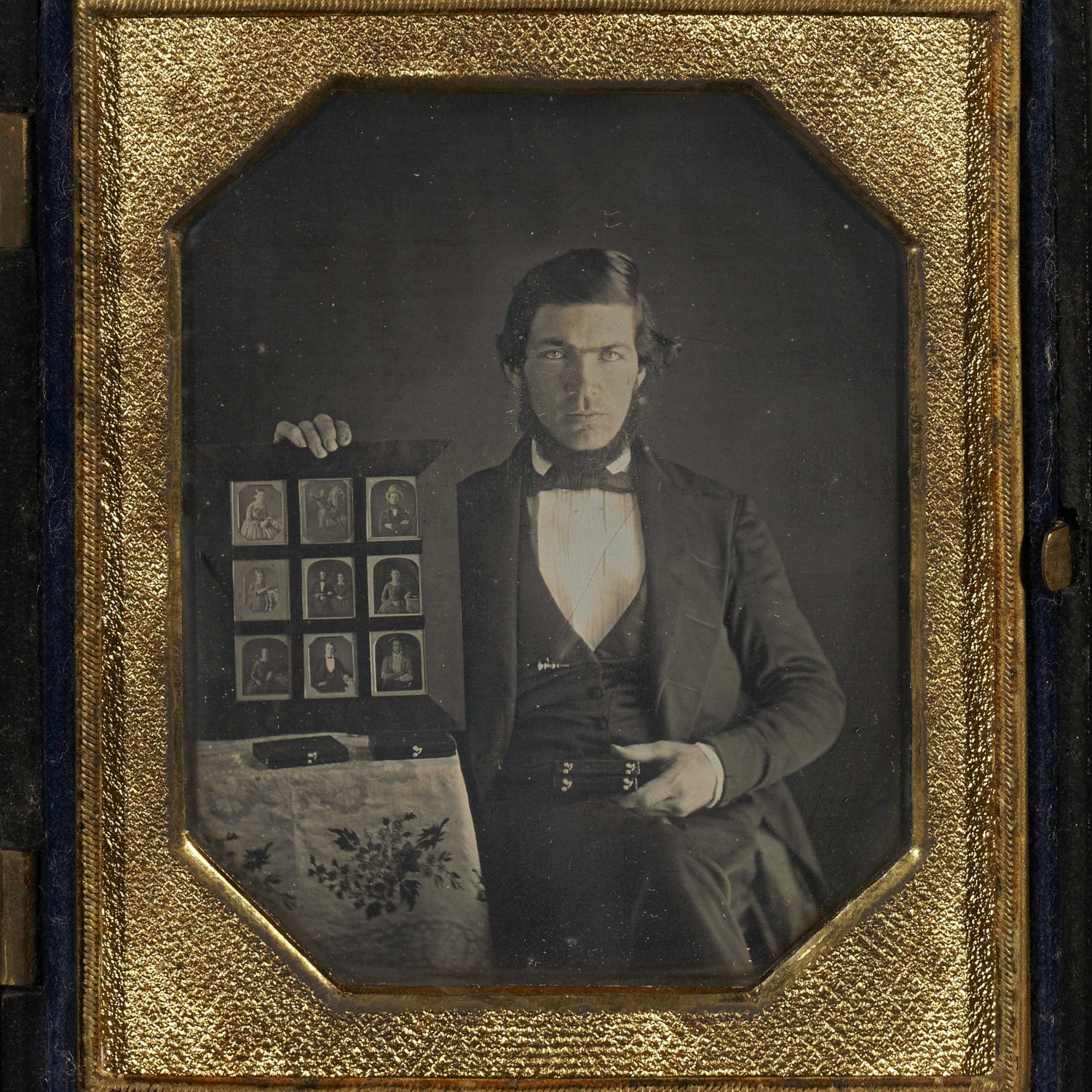How can we learn about the meaning of living on Earth when Earth system science (ESS) points to time frames and natural complexity that challenge imagination and exceed the scales of our daily living to such an extent? After all, the history of life is the history of mass extinctions ranging over hundreds of millions of years predating the order of life as we know it. Moreover, the data used to assemble some concept of the deep past and of planetary systems involves imperceptible, cumulative changes over vast spatial and temporal scales that appear clearly only at tipping points, often transforming the possibilities of human society as during the receding of the last Ice Age.
With planetary imagination, we are in the realm of the inhuman and the more than human. Yet the fate of the planet and the fate of human society depends on our ability to internalize the meaning of living on Earth such that we can respond politically to the trends human social processes produce and can collectively respond to planetary environmental changes that arise and should be addressed as best as possible.
These matters interest Judy Twedt, a philosophically and scientifically trained scholar of science communication and a former labor organizer. Her assumptions seem to be that the meaning of living on Earth depends in part on experiencing the planet as such, and that this in turn involves sensing it. She has used these premises to produce a range of climate music based on climate data, some parts of which she directly contributed to gathering during her time as an atmospheric scientist. Her music has been performed internationally in many classical or modern music venues.
I first met Judy in September 2002 on my first day of work at Colorado College. It was 8:45 AM, minutes before the first class of History of Modern Philosophy. She walked barefoot down the hall and said "hello," friendly and open, excited about philosophy. Judy studied philosophy at that institution, working on human dignity. An excellent student, she took her time to graduate, taking gaps to spend time in Mexico learning about political activism and human rights as well as at the Denver ACLU protecting civil rights. She then traveled to the Middle East to work, learning about its society in Jordan during the time when the USA had become heavily embroiled in the occupation of Iraq. Returning to Washington, D.C., Judy worked with inner city youth on photography in an after-school non-profit organization, then returned to her home in Washington State to take classes in basic science so that she could study atmospheric science. Beginning her PhD program in that field, she eventually discovered the questions of planetary imagination she currently addresses through art and science. This led her to create her own PhD program using an option at the University of Washington for self-created courses of study. She graduated not long ago with a doctorate best described as within science communication. Judy's path is a consummate philosophical path.
The construction worker’s daughter
Several years ago, I was finishing my masters degree in atmospheric sciences and struggling to identify a compelling research direction for my doctoral work in that program. I started graduate school in 2013, after studying philosophy and environmental ethics as an undergraduate. I was drawn to climate models for the kinds of planetary questions you could explore with them.

In the summer of 2017, western Washington State experienced unprecedented wildfire smoke. Ash rained down from the sky. Visibility was worse than the thickest fog. No one was prepared. Preschool children went outside to play. Workers continued on their jobs. Under the relentless ozone-laced smoke, a farm laborer picking blueberries on a corporate farm died that summer. Even the atmospheric scientists in my department, where I worked and studied, were surprised and dazed by the severity of the hazard.
Trying to find my next steps and unwittingly searching for more grounded, human connection in my scientific work, I started developing a series of workshops about climate change for workers in unions. I was a graduate student member and leader in my union, UAW Local 4121. Our county labor council, which advocates politically for all of the member unions in the county, had coordinated a climate caucus after some internal disagreement between unions over a project that would have brought high-paying jobs in the oil and gas industry to Seattle. So it was that I toured a unionized construction servicing company just outside of Seattle.
Workers at this company loaded and unloaded building materials outside all day long. Did they see connections between climate change and this very direct and immediate impact on our lives? Despite work interruptions from the wildfire smoke the previous summer, none of the workers connected the fires to climate change. I asked one after another how they experienced the wildfire smoke. Were they worried about it getting worse?
Only one worker on that shift had even heard about climate change:
“I learned about climate change from my kid. She’s in fifth grade. I was helping her with her homework.”
He was worried about it; the concern for his daughter was palpable. That made me stop and think about the science, the relationships, and how we learn from each other.
The importance of homebound learning rituals
What is an adequate educational model for internalizing the meaning of planetary environmental change, such as global warming? According to Pierre Hadot, schools of ancient Greek philosophy were concerned with helping their students develop a universal point of view, a view from above, to “‘raise up mankind from individuality and particularity to universality and objectivity.” For many schools, the “goal of a lived physics of the universe was to attain greatness of soul” (Philosophy as a Way of Life, 242). In this age of heat waves and droughts, sea level rise, permafrost thaw, extinctions, of the geologic transformation of the Earth by human activities, the goal of objectivity might also mean a kind of planetary consciousness, aware of our place in geologic time.
As I reflected on the construction worker and what he learned about planetary change by helping his daughter with her homework, I was struck by the power of homebound learning rituals. They evade the polarization of the news media. Multigenerational experience helps to inoculate against cynicism and the temptation to ignore or deny difficult information. Could these rituals fold planetary consciousness into the ancient philosophical quest for an objective perspective, so that we might live soulfully and aware of our shifting geologic era?
Now, as I write this, I am a parent and have experienced a similar form of learning through our ritual of bedtime reading. This daily rite, suffused with love, primes the conscious mind before it turns off for deeper processing and sense making in the dreams of sleep. Children often want to revisit their favorite stories over and over again. With my daughter, her favorite books often morph into imaginative play, as she recreates the characters and the most exciting moments from the storyline. This is a natural, innate progression from reading to embodied understanding with the text.
For instance, after reading What Goes on Inside a Beaver Pond more times than I can count, our family bed became a beaver lodge! My daughter will direct me, fellow beaver (!), to help patch the walls after a heavy rain, or to pretend to be a bear unsuccessfully scraping at the walls looking for a tasty meal inside. Sometimes the bear is allowed in if she promises not to eat the beaver kits (believe it or not, the name for baby beavers—ed.).
This kind of play did not begin until we had read the book many times. Repetition was key to her embodied, imaginative exploration of this knowledge. More recently, my daughter asked to visit a cave. I took her to the closest thing within a 15-minute drive, but when we arrived, she took one look and declared, “That’s not a cave. That’s a culvert!” She knows this because culverts mattered to a young beaver in the story who was journeying downriver looking for a suitable place to build her first home. Again, ecological knowledge came from the daily rite.

In Religion for Atheists, Alain de Botton argues that the wisdom and practices of religions have a lot to offer to our moral lives, even if we don’t believe the theology. Two practices gleaned from religions are pertinent to Earth-bound education: the need for repetition and the need for art. Both keep important ideas alive. “Aside from needing to be delivered eloquently,” he says, “ideas also have to be repeated to us constantly…Our inner lives must be lent a structure and our best thoughts reinforced to counter the continuous pull of distraction and disintegration (132).” Reading rituals with stories of ecological or Earth system science are one way in which we might begin to develop planetary perspective. What would the construction worker have thought of them?
Tornado-force sneezes and Jurassic puddles
For her third birthday, my daughter was given the book You are Stardust by the science educator, elin kelsey. The book features three-dimensional visuals by artist Soyeon Kim that merge real-world materials, fine sketching, and painting techniques. It evokes homemade crafts and puppetry. In each image, I can almost feel the textures of the papers and cords, and the strings they are hanging from. These illustrations grab our senses and help us form more felt connections to the text, making the story stickier in our memory. That helps enlarge our perspective over time, gradually.
I love one example in particular: a page shows a dark night sky background, in the foreground of which children float on clouds. A cheetah emerges from behind the cloud-like rendering of a giant sneeze. The page reads:
“You sneeze with the force of a tornado. Wind rockets from your nose quicker than a cheetah sprints.”
That page offers an anchor point. That’s a technical term from science communication studies. Certain kinds of felt experiences with measurable things or processes ground people in imagination and have been identified as important ways of developing a sense of scale. That line from the book connects the internally felt body process of a sneeze with wind, weather, and other species. Think about it: simply stating the facts of how fast a cheetah can run or the velocity of air from our nose in a sneeze would do next to nothing to help build an intuition of what it is like to experience these things.
After reading this book, my daughter started exclaiming that she could “run faster than a cheetah!” I believe that the story and imagery made the connection to an experience for her, and then she inhabited it. She’d learned that her breath can move that fast. It’s so important to start to feel connections within our own bodies and the forces of nature. It helps to restore a sense of connection to terrestrial processes and to other animals.
Another page shows a child pouring a giant glass of water down a hill. But the ribbon of water becomes a river where dinosaurs drink, and another child swims. The page reads:
“The water swirling in your glass once filled the puddles where dinosaurs drank.”
If the cheetah-wind fantasy image connects us to the Earth now, this page builds a bridge between something as quotidian as drinking water and a world long extinct. That helps for understanding geologic time in continuity with our present, haunting now with deep time. The same elements that circulated through the bodies of dinosaurs circulate through our bodies! The cycle of water— from clouds to earth and back to clouds again—has persisted across the mass extinction events. Like the dinosaurs, it will endure after homo sapiens fade to extinction. When I read this, I think of my drinking water holding the memory of Earth’s history. These Earth science books my daughter and I read at bedtime help both of us keep the planet in mind. Just like homework assignments that the construction worker learned from with his daughter.
Data sonification
But let me back up now and share another practice for holding Earth in mind. After working with labor unions on climate change, I needed to change the course of my research. In the late 2010s, I no longer wanted to produce specialized, scientific knowledge but to explore ways to connect soulfully to climate change data. Environmental data is an artifact of a living ecosystem that comes from many sites of connection between scientists and the environment. I felt that we needed ways to memorialize and elevate the significance of some of the most important planetary data sets we have today.

I began making musical compositions from climate data using a technique called data sonification. Listening to climate data allows one to have a temporal experience with the data, unlike a quick glance at data on a chart. Music is inherently emotional and has a way of connecting right to the heart. Personal connection matters because it takes emotional intelligence to acknowledge that climate change isn’t simply a problem to be solved; it’s also a destabilizing experience of loss and rapid change on our finite planet. A deeply-felt connection to planetary data is necessary if we want data to inform our deliberations about how to live together on this changing Earth, given so many competing short-term demands on our attention.
One composition I created has been performed in many settings, both private and public, on radio broadcasts, podcasts, and live performances. It uses satellite data of Arctic sea ice extent from the National Snow and Ice Data Center’s sea ice index. The satellite era lends a new meaning to the ancient philosopher’s quest for an objective view from above. With lenses looking down on the Earth, we can now see and measure changes on scales that aren’t possible with in situ, or Earth-bound, observations.

When the temperature over the salty ocean drops below about 28 degrees Fahrenheit, the ocean surface freezes over and becomes sea ice. This ice supports the whole Arctic ecosystem, and reflects sunlight away from the planet, keeping the earth cool. The sea ice extent is the area of ocean covered by ice and the area between ice and open water. The monthly sea ice extent dataset has a strong seasonal cycle. This is because the Arctic Ocean completely freezes over each winter, and melts back, but not completely, in the summer. This summer melt season has become longer and more severe over the satellite record, but the dominant signal in the record is still the seasonal cycle.
The intention of this piece is not to focus on the seasonal cycle, but rather to highlight the alarming rate of multidecadal decline in sea ice due to burning fossil fuels. To focus on that signal, I subtracted the 1978-2010 monthly average sea ice from each monthly data point. The resulting data is the deviation from the monthly average, also called the ice extent anomaly. To sonify the sea ice anomaly, I translated the y-axis of this graph to the piano keyboard so that lower and higher values become lower and higher pitches, respectively. One eighth-note represents one month of data, and there are twelve eighth notes per measure. Each measure represents one year in historical time. The “zero line,” which translates to the average ice extent, is also expressed musically: one hand, the left hand, plays a succession of four chords that hover around the pitch that represents zero sea ice anomaly. These four chords also represent the seasonal cycle, which rises and falls cyclically through the piece. The chords together, with the right hand playing monthly sea ice anomalies, creates a rhythmic structure: one seasonal chord for every three notes of monthly data. Because the left hand is playing chords around the zero line, at the beginning of the piece the right hand is above, or to the right, of the left hand. This is a natural position for the body. As time progresses, the right hand moves down the keyboard, and by the end of the piece, the right hand is continuously crossed over the left hand in an awkward reach. Thus the piece is both sonic and gestural—not only are the notes representing the data, the performer’s body also represents the extraordinary changes in the Arctic ecosystem.
It gets more complex, too, but always intuitively sensible. The data is mapped to a pentatonic scale spanning five octaves. This scale shifts twice in the piece, each time representing statistically significant shifts in the downward trends of ice extent. The first shift is in the year 2001. This is the year that at least one monthly ice extent trend became statistically significant. In the figure above, this is when the color starts to change. The scale shifts again in 2007, because in this year every monthly trend is statistically significant. The year 2012 is also notated on the score because that year’s melt season was the lowest on record as of 2018.

The piece begins with the left hand playing two measures of the seasonal chords before the right hand joins in playing the monthly sea ice anomalies. This allows the listeners to hear the rhythmic sound and pace of the seasons alone, before adding in the additional layer—the sea ice values—from the right hand. The music starts with data from January 1979 and ends in August of 2016—the end of the summer melt season. This video captures a performance by Jason Hardink, principal pianist for the Utah Symphony, in a recording with the University of Utah’s artivism4earth festival.
Embodied thoughtfulness in times of planetary change
Returning again to the construction worker, I wonder about how art can reach laboring people. Expressive arts are well-known practices for working with grief and moving through loss so that we don’t get stuck in it. A collective experience of listening to a mournful sonification of sea ice can feel therapeutic—a reminder that one is not alone facing the evidence of our melting polar ice caps. Can these things be made part of daily life in our society?
There are an increasing number of places to hear climate music—projects such as Music for a Warming World, and The Climate Music Project. Meanwhile, bedtime reading rituals can be a site of planetary learning, where the tender relations between caregiver and child can protect against despair, or apathy, or hopelessness. Repetition allows the stories to sink in long enough to become embodied knowledge. Repetition and affection bond the caregiver and the child, like the construction worker and his daughter, creating a force that can bear some of the planetary.



The post Sensing the Planet with Kids Books and Climate Music first appeared on Blog of the APA.
Read the full article which is published on APA Online (external link)








